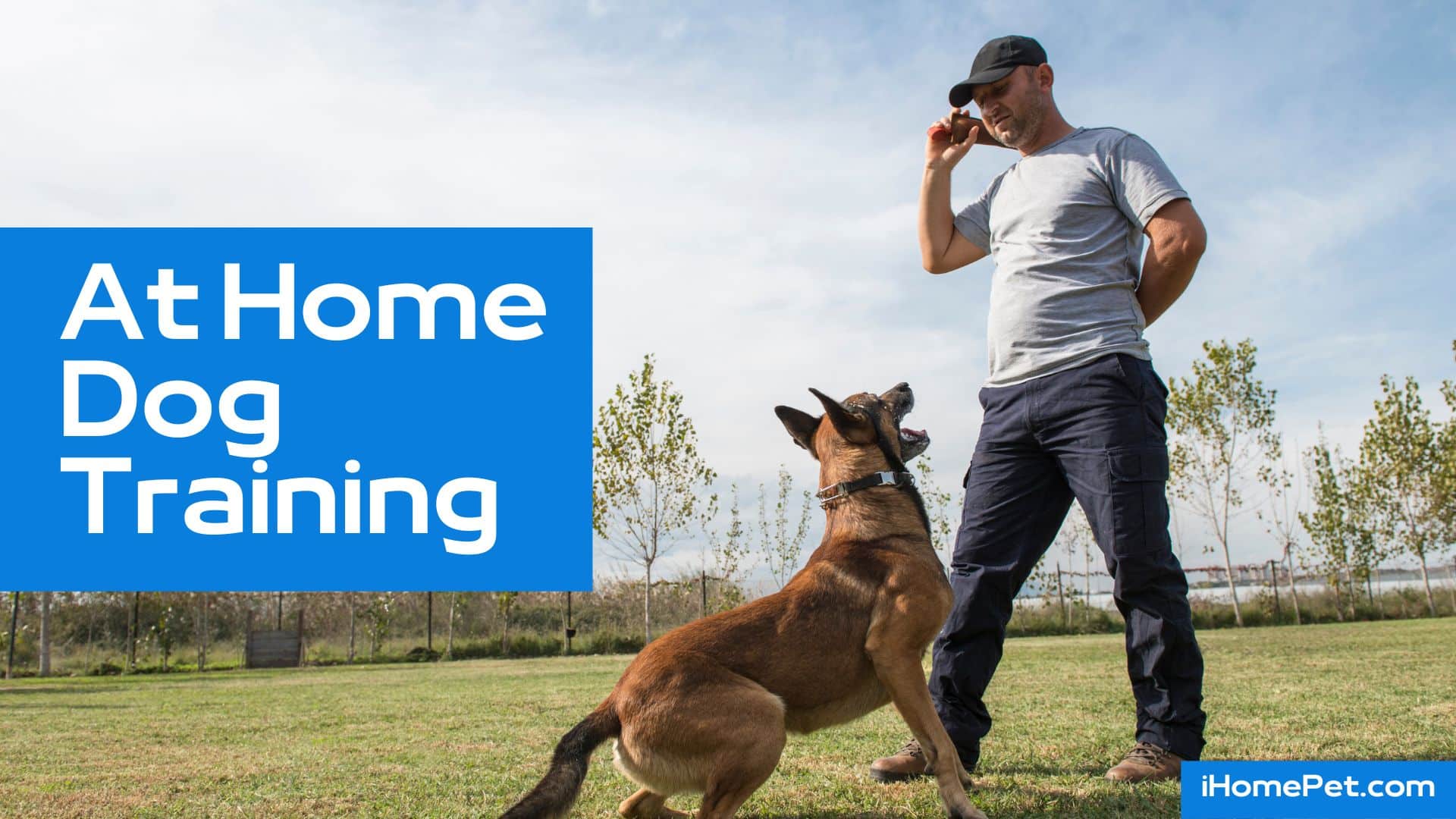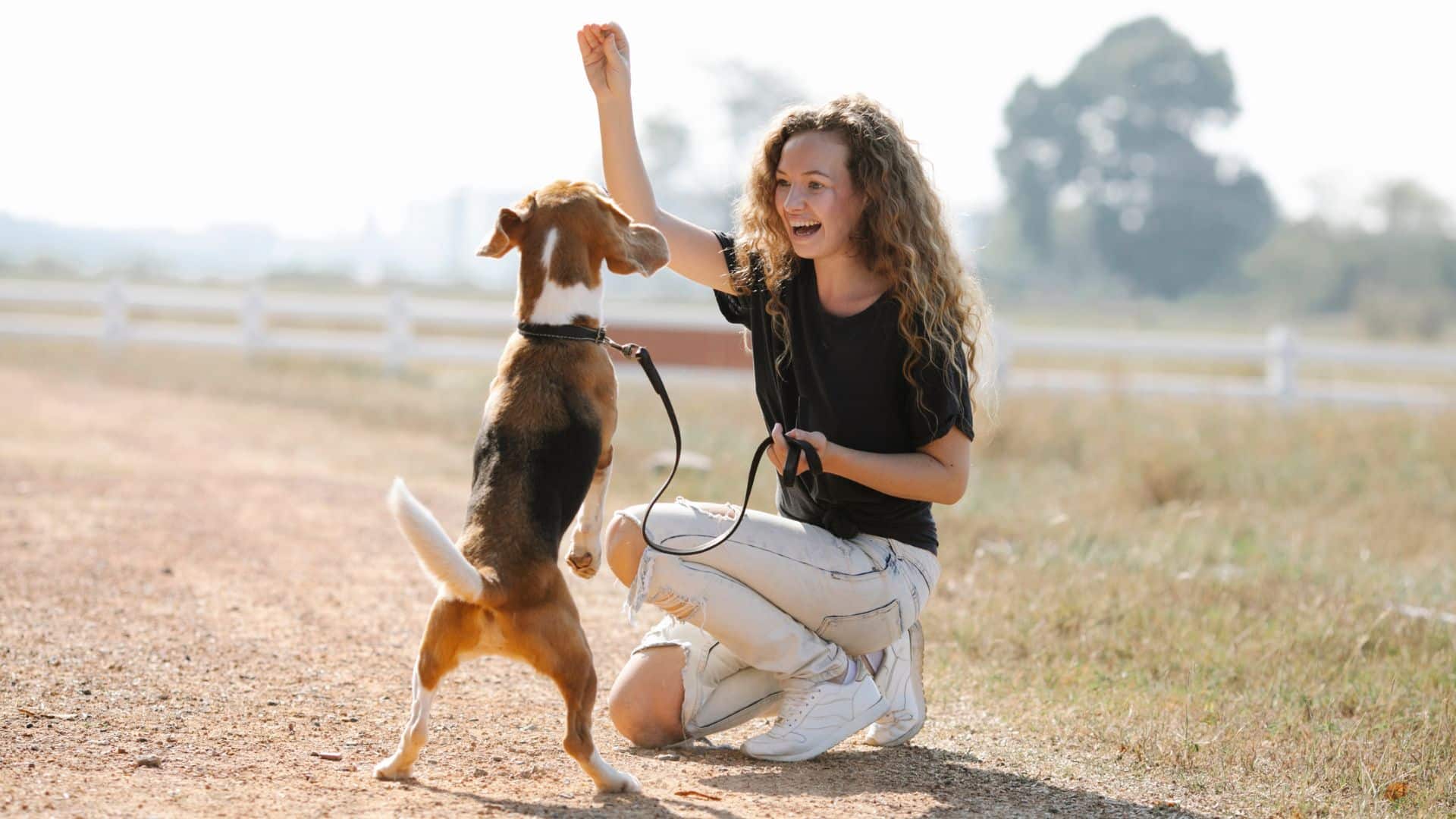Should your start teaching your dog new tricks? Dogs are really man’s best friend as they’re the jolly and affectionate kinds of pets. Having a dog would be even more fun and beneficial when you know the steps and tips for at-home dog training classes.
Allowing your dog to do anything it wants in the home may cause some problems, especially if you would have to leave your dog at home alone. Coming home to a house which has been messed up by your pet dog would be frustrating.
Enjoying time with your dog while doing advanced dog training would enhance your relationship with your pet and improve its health as well. Read on to learn about basic strategies and guides when training your dog at home!
Train Your Dog With Different Training Methods

Training your dog at home is quite a task and the first thing you’d have to do is prepare yourself for it. You can’t start to teach your pup only to get frustrated in the middle of it and stopping cold turkey.
Training a dog needs a lot of love, patience, and preparation. Some helpful training tools to have on hand would be a collar and leash, treats, chew toys, balls, and other interactive toys.
Obedience training
Training dogs to be obedient is an essential part of their development and ensures a harmonious relationship between dogs and their owners.
Use positive reinforcement when you train your dog so that they associate good behavior with rewards and praise. This can include giving them verbal encouragement or even a favorite toy as a reward for following commands correctly.
Leash training
When you first start training your adult dog on a leash, it’s important to choose a comfortable and properly fitted leash and collar.
Begin by introducing the leash gradually, allowing your new puppy to get used to the feeling of being restrained. Start with short walks and gradually increase the duration and distance as your dog becomes more comfortable.
Crate training
Some dog trainers use crate training as a method to help with housebreaking and provide a safe space for the puppy. The crate should be large enough for the dog to stand, turn around, and lie down comfortably.
Other dogs will need a bit more time and patience to get used to the crate. It’s important to make the crate a positive and inviting space for your dog by placing comfortable bedding and toys inside. Gradually introduce your dog to the crate by leaving the door open and allowing them to explore it at their own pace.
What Are the Basic Things Your Dog Needs to Learn?
When you have a new dog in your home and you’d like to start dog training, it would be best to start with the basic things your dog would have to learn.
The basics would include everything your dog would need to learn to do so it can live in your home well and follow the rules to make it a lot easier for you to co-exist.
Set a Daily Routine for Your Adult Dog
Setting a routine for your new pup is the first step while training a dog at home. Once your dog gets used to doing the same thing over and over again, it will begin to get used to what goes on with your house and will be a lot easier to train.
Toilet Training Your Dogs
Whether your furry friend spends all its time indoors or it spends its time both indoors and outdoors, toilet training your dog is one of the most basic things to teach at in at home to a dog.
Potty training a dog requires tons of patience as a lot of trial and error is involved in the process. The first thing to remember is to start as early as possible – when your puppy is around 3-4 months when it is already able to control its bowel and bladder movements.
Leaving Your Dog Alone at Home
Having a dog would mean that at some point, you’d be leaving it home alone, when you’d have to go to work, or for longer periods of time, like when you have to go out of town.
In cases like these, you’d have to feel secure enough knowing that you can leave your dog alone without having to worry that you will come home to a house in ruins.
Using a Certified Professional Dog Trainer
A professional dog trainer can be useful if you have multiple dogs. They can help you establish a harmonious and balanced pack dynamic. Since professional dog training gives your dogs external structure and guidance, it can also help with separation anxiety.
Set A time For Your Training Sessions
As pet parents, you need to establish a consistent training schedule to ensure success. This will help your dogs understand what is expected of them and reinforce positive behaviors. Additionally, trick training a dog continuously can help you build a strong relationship and remove any bad habits.
Learning Basic Commands For Behavioral Issues
 Now that you know the most basic of things your dog would need to know to be able to live in your home, let’s move on to the basic and most common commands to teach your dog obedience as part of in home dog training.
Now that you know the most basic of things your dog would need to know to be able to live in your home, let’s move on to the basic and most common commands to teach your dog obedience as part of in home dog training.
Training your dog to respond to one-word commands and follow them can be a blast with a positive attitude and again, lots of patience.
Sit
- Have a treat ready and hold it right in front of your dog’s nose.
- Slowly raise your hand higher, which would make its head move up with the treat, making his lower half and bottom go down.
- As soon as it reaches the sitting position, say the command “sit” and give your dog the well-deserved treat.
Stay
- Once your dog has mastered the “sit” command, you proceed to the next step.
- Hold your palm in front of your dog and say, “stay.”
- Slowly step back a few steps and if it stays, reward your dog with a treat.
- You can increase the number of steps you take away from your dog little by little before giving the treats.
Come or Heel
- For this command, you’d have to put a leash on your dog’s collar.
- Get down to his eye level, lightly pull the leash and say the command, “come” or “heel.”
- If your dog comes to you, reward it with a treat.
Leave It
- Hold a treat in both your hands and show it to your dog.
- Close one of your hands into a fist and say the command, “leave it.”
- Allow your dog to smell, lick and try its best to get the treat but ignore what it’s doing. When your dog stops trying to get the treat, give it the treat from your open hand.
- Keep on doing this until your dog obeys the command and moves away from your closed fist.
- Finally, only reward your dog with the treat if he follows the command then looks into your eyes.
Down or Drop
- Hold a fragrant treat in your closed fist
- Then hold your fist to your dog’s nose and when he smells it, slowly lower your hand to the floor so that your dog follows it down.
- Slide your fist forward so he follows it and his whole body will lower along with his head.
- As soon as he’s in position, say the command “down” or “drop” then give your dog the treat.
Remember that it takes a lot of tolerance, persistence, and repetition for puppies or dogs to learn these basic commands. Don’t worry if your dog doesn’t learn these right away, just keep rewarding good and correct behavior with lots of treats and affection and you’re sure to see results!
Most Useful and Practical Training Tips: Basic Foundation
You’re almost there! Training a dog at home needs a lot of endurance from you and the right information will surely help you out a lot.
Here are some of the best training tips, put together for your advantage and convenience!
- Make sure you and your dog are in the right mood and temperament before starting your daily training sessions.
- Only use a short time for your training sessions daily to keep your puppy interested.
- When teaching commands, say the command only once for it to stick.
- Be consistent when training your dog – don’t vary your training techniques.
- A good time to train your dog is before mealtime and tries to keep distractions to a minimum so your dog will remember training better.
Last Updated on 16/03/2025 by Karen Snow
Hi! I’m Karen and a certified dog lover. As a freelance writer and blogger, I do my best to squeeze in some time with my dogs, learning more about the way they act and how I can make sure that they continue to stay well-cared for by yours truly.
My dogs have helped me through a lot, and this is my way of giving back to them! Besides animals, I also love to travel and cook, having explored my country’s restaurants and unique places. Follow me as I show you all the amazing tips and bits of information I learn along the way about our furry friends!
